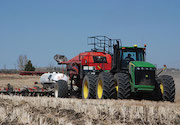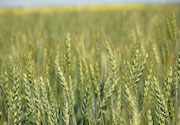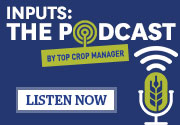| |
| |
 |
 |
| |
 |
|
@{mv_date_MMM d, yyyy}@ |
|
| |
 The program is in development at Conestoga College in Kitchener, Ont. Students will learn skilled trades in high-demand areas such as spraying and fertilizing, custom tillage and harvesting.
» Read more...
The program is in development at Conestoga College in Kitchener, Ont. Students will learn skilled trades in high-demand areas such as spraying and fertilizing, custom tillage and harvesting.
» Read more...
Officially known as Plant Gene Resources of Canada, the genebank’s work preserves the genetic diversity of cultivated plants and their wild relatives to support plant breeding and conduct research and education.
» Read more...
The fund is a $35-million investment to improve health and safety on farms to prevent and respond to the spread of COVID-19, including direct infrastructure improvements and a range of safety measures.
» Read more...
|
| |
 |
 |
| |
|
| |
 Enhanced efficiency nitrogen (N) fertilizers are designed to improve crop N use efficiencies and reduce N losses. But when and where do they pay off for farmers? More than 10,000 data entries were collected on enhanced efficiency fertilizer (EEF) products for a research study led by Symon Mezbahuddin at Alberta Agriculture and Forestry to analyze grain yield in relation to fertilizer price.
» Learn more
Enhanced efficiency nitrogen (N) fertilizers are designed to improve crop N use efficiencies and reduce N losses. But when and where do they pay off for farmers? More than 10,000 data entries were collected on enhanced efficiency fertilizer (EEF) products for a research study led by Symon Mezbahuddin at Alberta Agriculture and Forestry to analyze grain yield in relation to fertilizer price.
» Learn more |
| |
 When should wheat go in the ground? Most guidelines refer to calendar date rather than soil temperature when it comes to seeding deadlines. Brian Beres, research scientist with Agriculture and Agri-Food Canada in Lethbridge, Alta., has led several studies to determine the feasibility of seeding ultra-early into cold soils. While it won’t work at every farm every single year, reports are positive.
» Learn more
When should wheat go in the ground? Most guidelines refer to calendar date rather than soil temperature when it comes to seeding deadlines. Brian Beres, research scientist with Agriculture and Agri-Food Canada in Lethbridge, Alta., has led several studies to determine the feasibility of seeding ultra-early into cold soils. While it won’t work at every farm every single year, reports are positive.
» Learn more |
| |
|
| |
 While we might prefer to forget 2019’s harvest, it’s important to take the lessons learned and best practices developed forward with us. With harvest on the horizon, the performance of this year’s crop will set the stage for what’s required next year. Robert Mullen, director of agronomy sales for Nutrien, joins us for this episode to discuss post-harvest best practices, from soil sampling to nutrient management.
» Listen now
While we might prefer to forget 2019’s harvest, it’s important to take the lessons learned and best practices developed forward with us. With harvest on the horizon, the performance of this year’s crop will set the stage for what’s required next year. Robert Mullen, director of agronomy sales for Nutrien, joins us for this episode to discuss post-harvest best practices, from soil sampling to nutrient management.
» Listen now |
| |
|
| |
|
|
| |
| |








